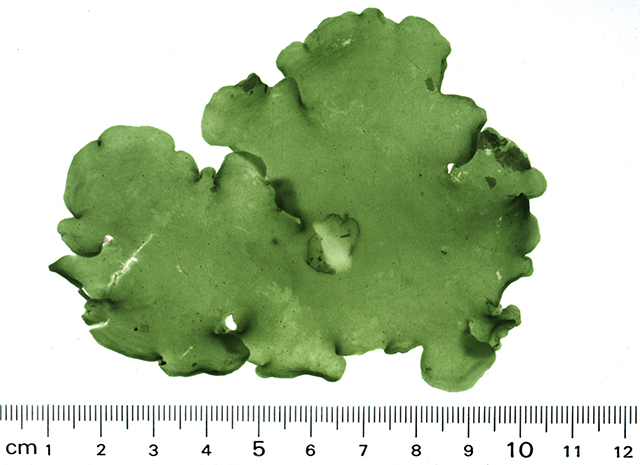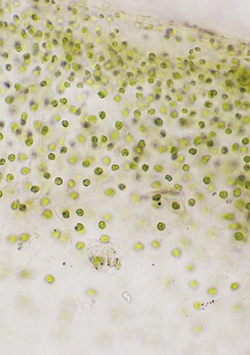
The study of algae collected from the Gulf of Mexico revealed a significantly different diversity of organisms in early green plant evolution. The findings published this month in Scientific Reports detail the unique order of algae called Palmophyllales, and how it evolved into a multicellular plant at least 540 million years ago, adding a new branch to the tree of plant life.
“The common interpretation of the green plant ancestor was that of a simple planktonic unicellular organism with flagella,” says Zechman. “This study turns that theory on its head. Given that Palmophyllalaes lack flagellated stages, are multicellular and grow attached to the sea floor, other interpretations of the ancestral green plant are plausible.”
While working for Harbor Branch Oceanographic Institute in the early 1990s, Zechman used a deep-sea submersible to collect specimens of Palmophyllales, becoming among the first and few to observe these organisms growing in their natural habitat.
His subsequent study on Palmophyllales, published in 2010, first raised the possibility of a previously undiscovered and early diverging lineage of green plants. The new study provides more robust data for that hypothesis, allowing researchers to describe a new class of green algae.
“This current paper reveals not only the earliest diverging green algae in the evolution of green plants, but also suggests that a unique type of multicellularity arose independently in this lineage and perhaps much earlier than we thought,” he says.
The discovery has opened many new questions about why and how the algae diversified hundreds of millions of years ago.

The cells of Palmophyllales are similar to islands, each isolated in a sea of mucilage—a cartilaginous gel that, like a human ear, is stiff yet pliable. Zechman wonders how these cells can communicate with each other to produce the distinct multicellular shapes that are the basis for different species.
Another question is the matter of sunlight. Algae are photosynthetic organisms, yet Palmophyllales are found at depths of up to 210 meters where little light penetrates and few photosynthetic organisms exist.
“After this study, perhaps the next step is taking a closer look at Palmophyllales. What is it about their metabolism and photosynthetic physiology that allow them to live at such great depth? It’s a mystery,” says Zechman.
Zechman’s collaborators, lead author Frederik Leliaert from Ghent University in Belgium and Juan Lopez-Bautista from the University of Alabama (among others) were co-authors of this study. Lopez-Bautista was principal investigator in a large National Science Foundation project, the Green Algae Tree of Life, designed to discover and describe various types of green algae. Lopez-Bautista’s lab received $600,000 of the $2.76 million NSF grant to determine where algae fit in the evolutionary chain.
The funding was used to hire post-doctoral researchers and map the genomes of the algae collected from the Gulf. Additional samples and phylogenetic software allowed for more comparisons to other algae and plants and helped researchers pinpoint when Palmophyllales branched off from related plant species.